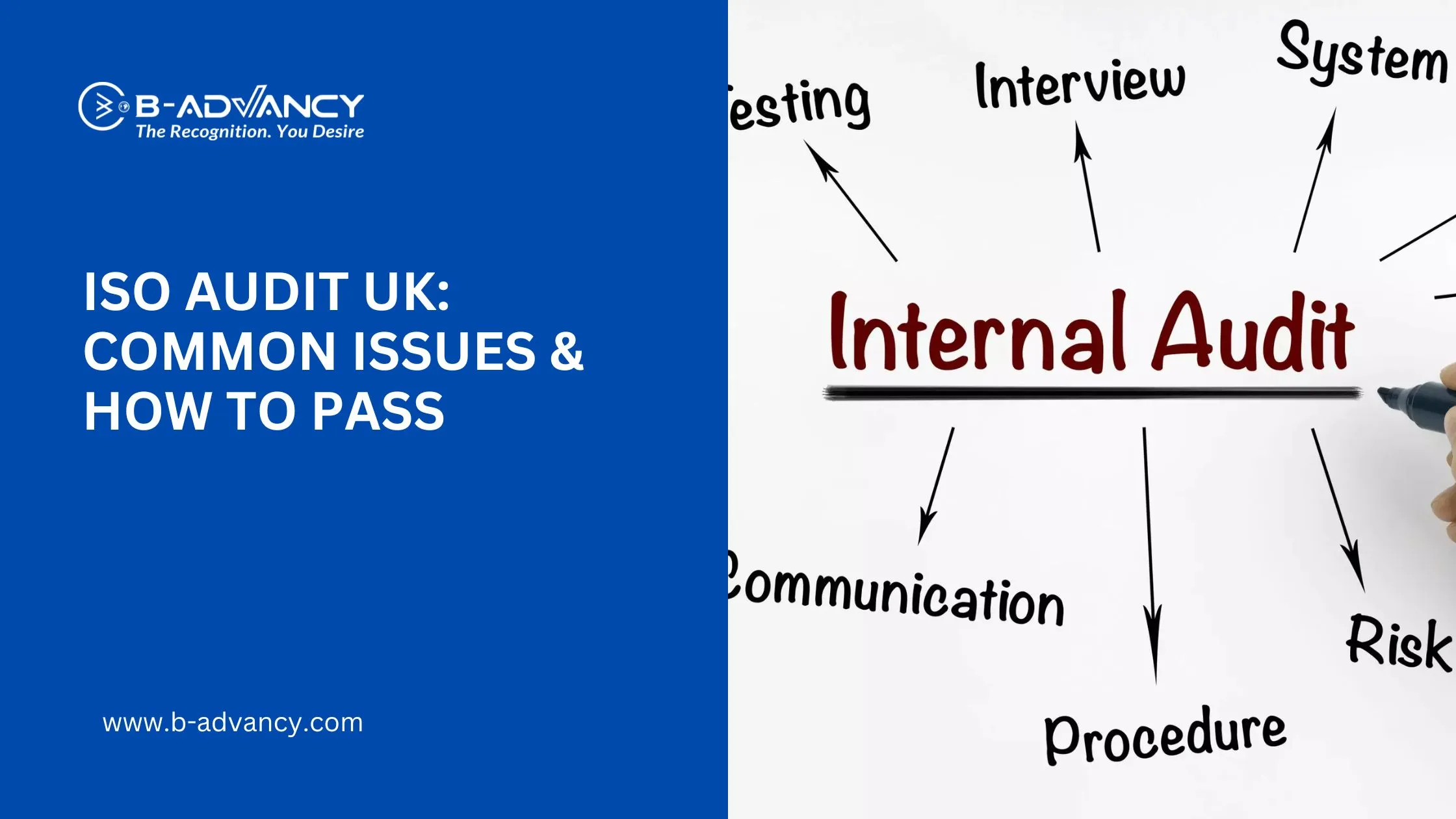
For UK businesses embarking on the journey towards ISO certification, the audit process represents a critical juncture. It's a moment where meticulous preparation and robust systems are put to the test. However, the path to certification is often fraught with obstacles, leading many organizations to stumble. This comprehensive guide aims to illuminate the common pitfalls encountered during ISO audits and equip you with detailed, actionable strategies to navigate these challenges, ensuring a smooth and successful certification experience.
An ISO audit is a systematic evaluation conducted by an accredited certification body. This rigorous assessment verifies whether a business's management system adheres to the specific requirements of a chosen ISO standard. It's not merely a formality; it's a deep dive into your operational processes, ensuring they are not only implemented but consistently maintained and demonstrably effective.
Internal Audit: The Foundation of Preparedness:
This is your organization's self-assessment, a crucial step in identifying and rectifying potential non-conformities before the external auditors arrive.
Detailed Advice: Conduct regular, documented internal audits. Use a structured audit checklist aligned with the relevant ISO standard. Involve employees from all departments to ensure a holistic view of your processes.
External Audit: The Official Validation:
This is the formal assessment carried out by an independent, accredited certification body. It's the moment of truth, where your systems are scrutinized against the ISO standard.
Detailed Advice: Ensure your documentation is meticulously organized and readily accessible. Prepare your staff for potential questions and ensure they understand their roles in the ISO process.
Surveillance Audit: Maintaining Continuous Compliance:
These periodic reviews, conducted after initial certification, ensure ongoing adherence to the ISO standard.
Detailed Advice: Treat surveillance audits with the same seriousness as the initial certification audit. Document all changes to your processes and ensure continuous improvement.
Navigating Common ISO Audit Challenges (And How to Overcome Them):
Incomplete and Inconsistent Documentation: The Silent Saboteur:
Many businesses underestimate the importance of meticulous record-keeping. Missing policies, procedures, and training logs create significant vulnerabilities.
Detailed Advice: Develop a comprehensive document control system. Utilize digital platforms to streamline document management. Conduct regular document reviews to ensure accuracy and currency.
Lack of Employee Awareness and Engagement: The Human Element:
Employees who are unaware of ISO requirements or their roles in maintaining compliance can inadvertently derail the audit process.
Detailed Advice: Implement a robust training program that covers all aspects of the ISO standard. Foster a culture of continuous improvement and encourage employee feedback.
Ineffective Risk Management: The Proactive Approach:
Failing to identify and address potential risks can lead to significant non-conformities.
Detailed Advice: Develop a structured risk assessment methodology. Use risk matrices to prioritize risks. Regularly review and update your risk management strategies.
Non-Conformance with Established Processes: The Gap Analysis:
Processes that deviate from ISO requirements will inevitably lead to audit findings.
Detailed Advice: Conduct thorough gap analyses to identify discrepancies between your current processes and ISO requirements. Implement corrective actions and document all changes.
Failure to Demonstrate Continuous Improvement: The Dynamic Standard:
ISO standards emphasize ongoing improvement. Simply maintaining the status quo is not enough.
Detailed Advice: Establish key performance indicators (KPIs) to track progress. Utilize customer feedback and audit findings to drive continuous improvement. Document all improvement initiatives.
Lack of Top Management Commitment: The Leadership Imperative:
Without strong leadership commitment, the ISO process can falter.
Detailed Advice: Ensure senior management actively participates in ISO meetings, audits, and improvement initiatives. Communicate the importance of ISO certification to all stakeholders.
Achieving ISO Audit Success: A Step-by-Step Guide:
Step 1: Conduct a Thorough Internal Audit:
This is your rehearsal, your opportunity to identify and correct any weaknesses.
Step 2: Meticulous Documentation Management:
Organize and ensure that all documentation is accurate, up to date, and readily available.
Step 3: Comprehensive Employee Training and Engagement:
Educate your staff on their roles and responsibilities in maintaining ISO compliance.
Step 4: Address and Resolve Previous Audit Findings:
Learn from the past and ensure that all non-conformities are corrected.
Step 5: Professional and Transparent Auditor Interaction:
Provide clear, concise, and honest responses to the auditor's questions.
Step 6: Demonstrate a Culture of Continuous Improvement:
Show evidence of ongoing enhancements in processes, risk management, and performance tracking.
Passing an ISO audit is a testament to your organization's commitment to quality, efficiency, and continuous improvement. By understanding the common challenges and implementing these detailed strategies, UK businesses can confidently navigate the audit process and achieve ISO certification. This certification not only enhances your credibility but also drives long-term success in an increasingly competitive marketplace.